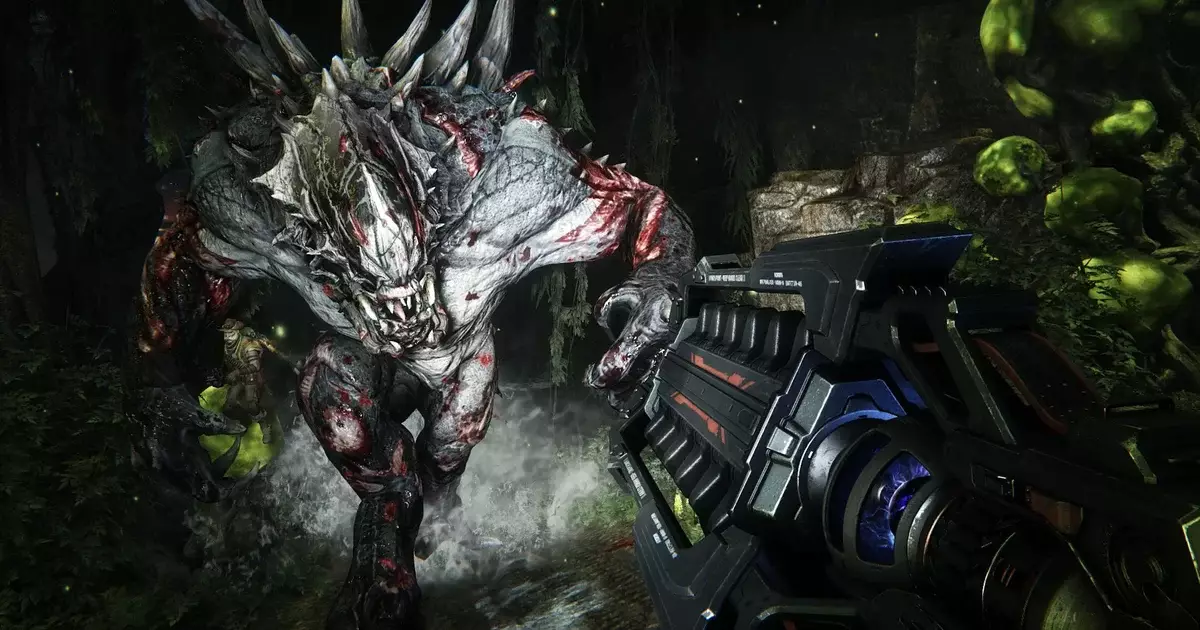Evolve was an ambitious experiment in asymmetrical multiplayer design, blending the thrill of hide-and-seek with the chaos of a high-stakes hunt. At its core, it offered a compelling dichotomy: one colossal, fast-moving creature pitted against four diverse hunters, each equipped with unique tools. When it worked, Evolve had the makings of a revolutionary multiplayer experience—a tense, unpredictable dance between predator and prey. The appeal was undeniable, and at launch, I was captivated by the Wraith, a nimble and deadly alter ego capable of warping through the environment. It evoked the visceral thrill of classic sci-fi horror, with a modern twist that could have set new standards for multiplayer interaction.
However, the allure quickly soured due to numerous systemic flaws. In trying to forge a sustainable live-service model, Turtle Rock compromised the game’s integrity with an overbearing grind and a relentless microtransaction ecosystem. The addictive chase for unlocks and upgrades overshadowed the gameplay itself, transforming Evolve from an innovative idea into a choreographed race for progression. The developer’s attempt to monetize every facet tarnished the experience, creating a barrier that discouraged players from fully enjoying what could have been a timeless classic. The game’s eventual delisting and attempt at a free-to-play reboot did little to salvage its legacy, leaving behind a community that still mourns what could have been.
The Unfulfilled Promise of Evolve 2
Amidst the disappointment, a tantalizing glimpse into Evolve’s potential future emerges through concept art and pre-production materials for a supposed sequel. According to former Turtle Rock artist TJ Frame, development of Evolve 2 was underway but ultimately canceled after several months of pre-production. The sketches and ideas reveal a game that could have expanded on its predecessor’s universe with more structured, mission-based gameplay and richer environment design.
Rather than embracing the open, sandbox-style horror of the original concept, Evolve 2 seemed poised to introduce more linear, narrative-driven elements. One particularly evocative map was an enormous asteroid mining station, reminiscent of the USG Ishimura from Dead Space—an environment ripe for horror, claustrophobia, and the grotesque insect-themed motifs that the concept art emphasized. These details suggest a darker, more immersive experience where the predators were not just monsters, but part of a meticulously crafted ecosystem of alien worlds.
This pause in development, however, hints at a broader missed opportunity: to evolve the game into something that combined narrative structure with strategic gameplay, rather than being tethered to the grind-heavy live-service model. Instead of a game that froze its potential in an endless cycle of unlocks and microtransactions, Evolve 2 could have been a return to a more purity-driven horror sandbox—lean, intense, and deeply atmospheric.
The Reality of Market Forces and Developer Direction
The persistent obstacle that doomed Evolve’s beta future was the company’s strategic pivot towards monetization. The industry’s obsession with microtransactions and live-service models led Turtle Rock, under publisher 2K’s guidance, to reframe Evolve as a grind-centric product. The consequence was a project marred by complexity, discouraging player engagement, and ultimately, its de-listing from digital stores.
The decision to ditch the original vision in favor of monetization reflects a broader trend where innovative ideas are sacrificed on the altar of profitability. Evolve’s case illustrates how wonderful concepts can become casualties when market pressures prioritize revenue over creativity. Though a sequel might have been a chance to reset the formula, it’s unlikely the developers could have resisted the siren song of ongoing monetization strategies. This reality underscores a brutal truth: in today’s climate, even the most promising ideas risk being compromised before they reach their full potential.
Yet, amid this bleak landscape, it’s worth acknowledging that the core of Evolve—its synergy of predator-prey gameplay—still resonates. The community’s resilience, with servers kept alive and fond memories shared, demonstrates that even flawed products can leave a meaningful legacy. It is this potential that makes the canceled Evolve 2 all the more poignant: a beautiful idea, trapped in the prison of industry-driven design.
In Retrospect: What Could Have Been
Looking back, it’s clear that Evolve’s failure was less about the gameplay itself and more about the ecosystem it was forced into. The environment where expansion, monetization, and systemic grind overshadowed the primal heart of the game robbed players of the experience that could have defined a genre. Turtle Rock’s artistic visions, glimpsed through the canceled sequel’s concept art, hint at a world of horror and alien architecture that could have captivated fans for years to come.
The hope now lies in understanding the importance of preserving creative integrity. Evolve’s story is a cautionary tale about how commercial pressures can distort innovative concepts, preventing their full realization. Yet, it also stands as a testament to what could have been—a universe where predators and hunters intertwined in a perpetual nightmare, free from the shackles of grind and transactional detours.
As the studio’s focus shifts with new ownership and projects, the ghost of Evolve remains—a reminder of the potential that almost was, and a call to future developers: don’t let monetization stifle creativity. The universe it dreamed of might never return, but its essence continues to inspire those who believe in the power of genuine, unbounded gaming experiences.


Leave a Reply